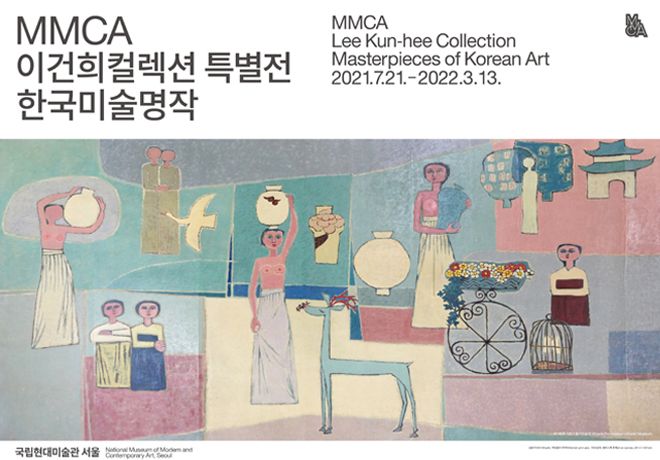1. LEE Qoede, ‹Portrait of Two People›(1939), private collection
After graduating from Teikoku Art School in 1938, Lee Qoede returned to Korea. In 1941, he founded the Joseon New Artist Association. The association’s members created works that were “of local color,” “oriental,” “traditional,” “romantic,” and “folkloric.” Despite their pursuit of “Korean” elements, their art was regarded as cutting-edge rather than old-fashioned.
‹Portrait of Two People› is a work that Lee Qoede submitted to the exhibition of the Art Association of Korean Students in Tokyo (Jae-Donggyeong Misul Heophoe). This group succeeded the “White Cow Group” (Baekwoohoe), which the artist had founded in 1935 with fellow students studying abroad in Tokyo.
At the center of the painting is a woman, the artist’s wife, who boldly meets the viewer’s gaze. Behind her, in the shadows, sits a man, probably the artist himself, depicted as if he were an alter ego. A critic from the time dismissed the work as being filled with a “dangerous aura of clashing opposites.” This “dangerous” quality evokes what Sigmund Freud described as an “eerie strangeness,” or the “uncanny.” This sentiment is “often and easily produced by effacing the distinction between imagination and reality, such as when something that we have hitherto regarded as imaginary appears before us in reality, or when a symbol takes over the full functions and significance of the thing it symbolizes, and so on.” This is one of the defining characteristics of surrealist art.
